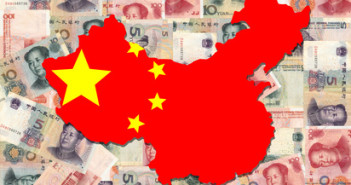Overnight price action throughout global financial markets was a reminder for market participants that the shock and awe factor associated with policy decisions from the People’s Bank of China cannot be underestimated. In a surprise move that is a response to the disappointing trade figures released over the weekend, the PBoC devalued the yuan by the most on record, fixing the domestic currency lower by 1.9%, effectively sending USDCNY to its lowest level since April 2013. The PBoC issued an English language statement citing the rationale for the large depreciation at last night’s central parity fix, telegraphing to the market the move was a one-time correction to help rebalance supply and demand conditions for the yuan. The yuan’s real effective exchange rate has risen close to 15% in the past year as a result of global macro developments that are conducive to strength in the USD, yet China’s central bank has kept the fix relatively stable and allowed USDCNY to fluctuate within that band. It seems as if the trade data released on the weekend was the ammo the State Council needed to persuade the central bank a depreciation in the yuan would be desirable to correct the rise in the real effective exchange rate in order to remain competitive in the global market place.
The concern for market participants is two-fold, one being short-term and another being longer-term. The short-term considerations are that last night’s massive devaluation has led those with large short USDCNY positions scrambling to cover their exposure and has exacerbated the fix with the offshore CNH market moving by a larger amount an inciting a stampede into the USD. The long-term considerations are whether the PBoC will now continue to competitively devalue the yuan as a means to help prop up their sluggish economy, which in turn could intensify outgoing capital flows if not managed in a relatively stable manner. As we get closer to midday in Europe and the North American open, the offshore RMB market as seen an outsized move in response to the overnight fixing with USDCNH rising close to 3% while commodity-linked currency’s slide in sympathy. Though it would stand to reason that an organized and stable devaluation of the yuan would increase the domestic economy’s global competiveness that would drive demand and manufacturing output, resulting in positive flow-through commodity demand effects, the aussie and loonie are both in the firing line as commodity currencies sink against the greenback.
Other macroeconomic developments around the world won’t have as much of an effect on price action, but focusing our attention elsewhere there were a few notable developments for market participants to keep their eyes on. The euro has bucked the overnight trend of greenback strength and is the only major higher against the big dollar as we go to print; albeit the gains are minimal at the midway point of the European session. The ZEW survey on economic conditions in Germany for the month of August came in lower than had been expected, printing at 25.0 and down from the 29.7 that was registered in July. On the bright side, current conditions strengthened from 63.9 to 65.7, blunting some of the disappointment from the headline reading. European bourses are mostly residing in negative territory as a result of the risk-off appetite permeating through markets as a result of the PBoC’s actions, though the euro has managed to keep its head above water in an environment where participants are rotating into the greenback.
As we get set for the North American open, there is again little in the way of tier-one economic data. Canadian Housing Starts for the month of July are due to be released in about one hour, though will likely have little overall impact on loonie price action given the overnight events. While the combination of housing data set to be released over this week will be a good leading indicator for ongoing consumer demand within Canada, it is unlikely today’s housing starts materially affects price action in the loonie. With the greenback in vogue and front-month WTI giving back a good portion of yesterday’s gains, the loonie is witnessing selling pressure that is seeing USDCAD claw higher before the opening bell in North America.
Further reading:
After The CNY Tumble, JPY Should Be Next – Credit Agricole
EUR/USD, USD/JPY, GBP/USD Pivot Points, TA – August 11 2015



